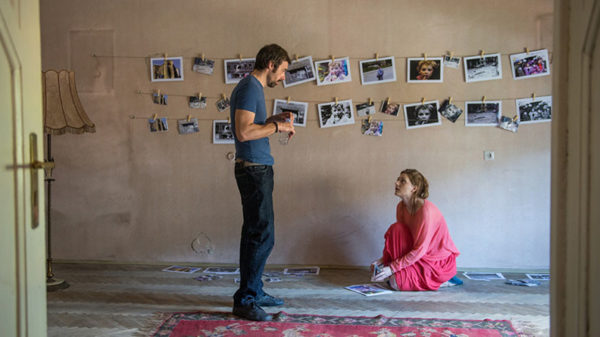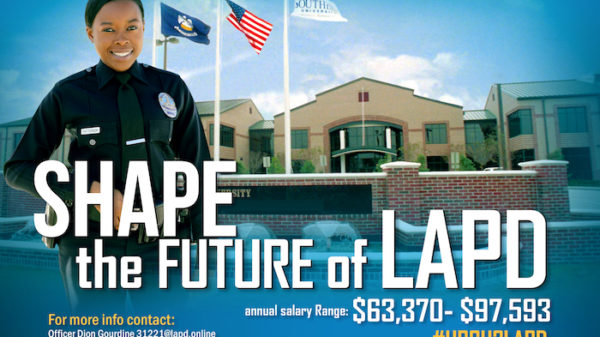One of the most imaginative and talented graphic artists of our times, Astrid Chevallier is a visionary on a mission: to transform the approach to movie poster designing by re-introducing the long lost craft of an artistic profession known (in French) as “affichiste”. In recent years there has been a notable shift in trends with regards to movie poster designs. Trading creativity and craftsmanship for mass production, movie posters have suffered from lack of originality. Delivering a unique approach to a profession largely dominated by men, French native, Chevallier understands that the future of visual communication and graphic design lies in the “return to basics” philosophy where marketing, functionality, creative sensibility and artistic finesse converge.
In recent years there has been a notable shift in trends with regards to movie poster designs. Trading creativity and craftsmanship for mass production, movie posters have suffered from lack of originality. Delivering a unique approach to a profession largely dominated by men, French native, Chevallier understands that the future of visual communication and graphic design lies in the “return to basics” philosophy where marketing, functionality, creative sensibility and artistic finesse converge.
Bringing her European influences and her conceptual vision to the table, Chevallier is adding a cutting edge twist into the $250 million business of creating movie posters and changing the way movie concepts are sold. Being the one visual image that becomes the ultimate trademark of a movie, a poster can make or break a movie. And for Astrid Chevallier her own personal creative identity visually stands on billboard in front of movie theaters.
You immigrated to the US on an Artist Visa – what does that mean?
What qualified you as an artist to be granted such Visa?
To qualify for an O-1 visa you must provide evidences that you are an “Artist of Extraordinary ability”.
“Extraordinary ability” means that the individual is one of the small percentages who have risen to the very top of their field of endeavor.
I had a prolific career in France, and I was able to gather elements in most categories.
Do you think that graphic design is a professional skill that is lacking in the US and perhaps more developed in foreign countries like Europe?
I think the way graphic design is perceived in the US and in Europe can be quite different.
In the US the technical aspect is more important in the sense that everything is polished and retouched before being published. In a way, design is related to advertising. And in the movie poster market it is mostly hyper-realistic.
In Europe, the concept/idea is more important that the special effects. The technical aspect is important too but it serves the purpose that things may be enhanced without having necessarily to be transformed. There’s a respect for what IS already. And there’s an window that allows to associate design with art. I come from a school where techniques can be mixed, without being perceived as “not professional”. I had to readjust my graphic vocabulary when I moved to Hollywood.
 How did the company that sponsored you find you in France?
How did the company that sponsored you find you in France?
I came through a different company who was looking for an Art Director anywhere in the world that would have experience in cultural poster design. That was precisely my background. I replied to the headhunter who posted the ad, and they interviewed me and introduced me to their client. I came to Beverly Hills to meet them and they offered me to join their team right away.
It ended up not working out, and they closed their doors soon after, but I had time to have a flavor of what could be done here in Los Angeles and I decided it could be worth trying to make it happen. I talked to a lot of people and ended being hired as the Creative Director of Purple Red, a cutting edge design studio that designs posters and collateral material for the film industry.
How hard was it for you to adjust to the cultural differences between France and the US in the workplace and in life? Can you share some of your experiences?
Well, I must say it’s been quite a challenge.
First of all my English wasn’t as fluent as it is right now. It had to work on that quite a bit. I registered at the public library and watched movies in English with English subtitles, and I red books exclusively in English. I still read a lot by the way, it builds up the vocabulary database in the back of my head, and it helps to understand the way people think and express themselves. I also studied a couple of accent reduction audio-books and tape-exercises which made me aware of subtle details.
 The American culture – especially in Hollywood, or so I’ve heard – is also very different from the French culture.
The American culture – especially in Hollywood, or so I’ve heard – is also very different from the French culture.
In L.A. people don’t speak up their minds, they’re very laid back, men and women rarely become friends, no one wears perfume, dating is based on specific rules and behaviors, food isn’t really important, everyone is dealing with individualism, and they think fashion week in Paris is the coolest thing.
I remember from my Parisian years that people tell what they think in your face, they’re hot tempered, men and women can be best friends and learn from one another, everyone dresses up and is aware of their appearance, romance is a priority that may lead to passion, food and wine are among the most important topics anytime night or day, there’s always someone to cheers you up or to laugh with you, and fashion is everywhere… I actually didn’t hear about fashion week until I moved to Los Angeles.
That being said, because the world is becoming smaller every day, the American culture is largely part of the French culture, and I guess in a couple of generations it will all be mixed up to some levels.
What is the main difference between the European and American approach to movie poster designing?
The European likes to use a still photography, and treats it as an iconic “moment” of the film.
The photo might be enhanced, the light might be twicked to bring a more dramatic effect, yet the picture should reflect the emotional promise of the movie.
 The American way tends to try to resume all the key elements of the story in one picture. Instead of working on a main emotion, it features the good, the bad, the action, the treasure quest, and the beautiful romance, and the scenic scenery, and the running away and so on.
The American way tends to try to resume all the key elements of the story in one picture. Instead of working on a main emotion, it features the good, the bad, the action, the treasure quest, and the beautiful romance, and the scenic scenery, and the running away and so on.
I guess it’s actually legitimate, since the movies are not built the same way, they don’t attract the same audience, and they are not marketed the same way.
It’s more a matter of a genre than a matter of cultural design.
Can you define the concept of “bringing a European flavor to your work”
I guess I’m trying to add an emotional dimension to a perfectly polished picture.
What made you decide to launch Purple Red? What were the challenges you had to overcome?
I decided to sign with Purple Red because I was given the opportunity to have creative freedom.
If had settled with a bigger established agency, I would have been one designer among others, and I would have had to serve the Creative Director’s vision, regardless of my own perspective.
Since I’ve been a successful conceptual graphic artist before I moved to Los Angeles, I could not envision myself give up my analytical skills and start over again. So I’ve chosen to integrate a small but very open structure that allows me be a consultant for bigger agencies that have access to multi-million dollars movie projects. That way we all benefit from the situation and I design for both the indie market and the Majors’ super-productions.
Being in the US now how do you balance staying connected with your French heritage and adapting to the American culture on both a professional and personal level?
I had to give up on cheese (laughs)!!!
… well, on a personal level, I have lots of French friends in Los Angeles. I speak French pretty much every day. We’ve all been here for a while so we all relate to one another. Being an expatriate is a special status that not everyone understands, so it’s good to be around people who have a similar path.
Now on a professional level, I’m very happy I work within American people: They’re very business oriented (hear less gossips than most work places I’ve been to in France), and I really enjoy the sense of efficiency! Since I’m a very detailed oriented person, and I like to build systems and solve complicated cases, I’ve noticed every now and then that those skills make a difference when we enter a high level here. Professionalism, dedication, being a team player yet seeing the big picture, showing positive ambition, and putting up a nice smile are definitely skills that helped me make my way up.
 What are your plans for the future?
What are your plans for the future?
Hopefully I’ll take Purple Red to the next level.
We have a vision, we know there’s a market, I have access to some of the best freelancers in town to form the best possible teams on selected projects, we like to think that the shift in the economy is a good opportunity to reposition ourselves, so hopefully we’ll get more work, from more established projects.
I also might want to go back to my roots a little bit and find new opportunities to design for a European audience.
I think I’ve learned at lot here, in terms of technique, but also about what I’m really good at.
I’d like to compile my experience of both cultures and come up with something fresh, powerful, and universal. And hopefully make it work on both continents.
Living and integrating a new culture has been challenging but very fulfilling. I’d be curious to keep growing, and in the future to exchange knowledge with people from Japan for instance who seem to have another completely different approach of design than the ones I’ve experienced so far… and that sounds exciting!











